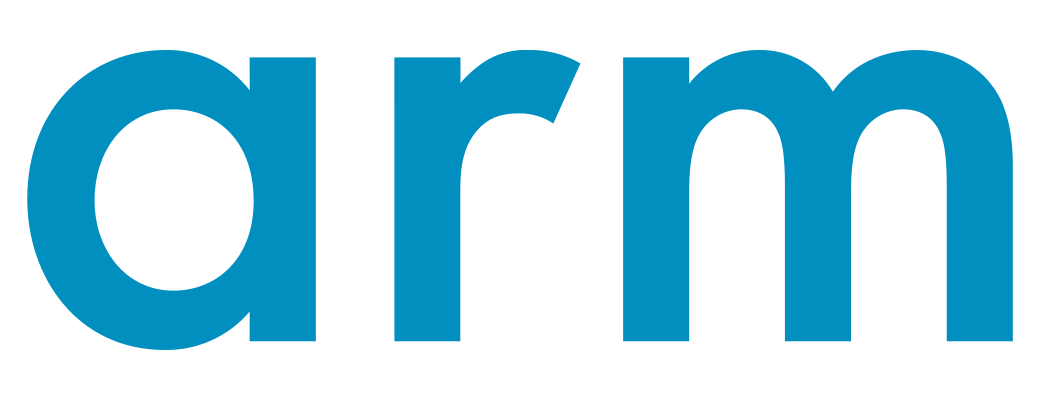This talk will take the usual bird's eye look at what's been happening in and around GStreamer in the last release cycle(s) and look forward at what's next in the pipeline.
GStreamer 1.22 saw the introduction of a new plugin for adaptive playback of HLS, DASH and MSS streams. The new elements take a substantially different approach to playing those types of streams, with better buffering and bitrate selection as well as features like LL-HLS playback.
This talk will explain how these elements improve upon the older adaptive demuxers and how they work.
An update on how Pexip continues to use GStreamer.
Talking about some of our more interesting patches as of late, spanning topics such as RTP, Network, TWCC, SCTP, iOS/Android, RTMP and Audio.
After an overview of the basic components needed to establish a WebRTC connection, this talk will present how GStreamer is providing user-friendly solutions to handle bi-directional communications with the webrtcsink and webrtcsrc elements. It will also present how those elements can communicate transparently with web browsers using the gstwebrtc javascript API.
The WebKit WPE and GTK ports are aiming to use GstWebRTC/webrtcbin as their WebRTC backend, as an alternative to LibWebRTC. During this talk we will present the current integration status of GstWebRTC in WebKit. Several pipelines are involved, even in a basic p2p video call. We will dive in the guts of a video call, from the media capture handling, to the streaming, including handling of...
With the growing power of machine-learning, the time has come for GStreamer to support complex, platform-independent analytic pipelines for tracking, super-resolution, noise filtering, speech recognition and more general analysis of timed data streams. We discuss a new flexible and efficient design to address these problems, without vendor or framework lock-in, which can easily interoperate...
Over the past 2 years, a new set of "Adaptive demuxers" (to support HLS, DASH, MSS) has appeared, along with a in-depth refactoring of the new playback elements (playbin3, decodebin3, ...).
During this talk, we will go over how those new features came to be, and how they have a profound impact on the resulting "Quality of Experience" for playback use-cases in GStreamer.
In this talk, RidgeRun shares techniques used to develop GstPluginPylon, an open-source project with a source element that adapts its properties and behaviors based on the specific camera models connected to the system. By utilizing introspection, child proxy, advanced GObject, and other APIs, the pylonsrc element can discover devices, probe their capabilities, and expose them as GObject...
The internet is a vast place full of different hardware and software routing packets to the correct device. Connecting a client to a server is easy, however connecting a peer to another peer is not as easy because more often than not, an address address may be shared between many devices and needs to be translated. ICE is a standard to figure out how (and if) a connection can be established...
Closed captions are an auxiliary stream that may contain subtitles, and other informational data along side the video frames they are associated with. For this talk, we will mostly talk about subtitling with both CTA-608 and CTA-708 data and look at some of the things that GStreamer can do with closed captions.
At Carl Zeiss Meditec AG we use GStreamer in several of our products. We will give an introduction of the video capabilities of our current devices and highlight the requirements which are particularly important for our customers.
The implementations of some features require more involved solutions on the GStreamer level. In the second part of the talk we will focus on these topics. This...
A brief overview of a few new elements for use in a speech to closed captions pipeline, the challenges with respect to latency and synchronization, and aspects that could still be improved.
Media Source and Encrypted Media Extensions are W3C JavaScript APIs for multimedia playback on the web. They are widely used on the websites and apps of different streaming platforms for content delivery. In this talk we will explain the architecture and status of the implementation of those two APIs in the GStreamer based ports for WebKit (mainly WPE and GTK).
News for GStreamer VA-API
- Present GstVA and its library
- Talk about the deprecation of GStreamer-VAAPI
- Present the new DMABuf negotiation mechanism
- Discuss the deprecation of the presentation layer on libva
- Share the new va driver for windows (d3d11 bridge)
- Talk about encoders and the proposal of a new base class for hwaccel encoders
- Discuss with the community about...
GStreamer is a powerful multimedia framework allowing users to build all possible types of media pipelines. However, complex pipeline development can be challenging to follow and debug. To address this, we propose DgiStreamer, a one-stop solution with a graph-based UI and connection type validation. DgiStreamer simplifies pipeline development, visualizes the flow, and ensures pads type...
RidgeRun, sponsored by Texas Instruments (TI), has created more than 20 GStreamer Open Source elements focused on getting the most out of the Jacinto and Sitara ARM based System on Chip, leveraging GStreamer potential to create high performance, zero-copy, and user-oriented applications for object detection, image classification, semantic segmentation, optical flow analysis, single-input /...
Emacs, Vim or ... VScode? Launched publicly in 2016, Visual Studio Code has quickly become the preferred IDE among professional developers, with a 74% share among all IDEs based on StackOverflow's 2023 annual survey.
During this year, several efforts have been made in Meson, its VScode plugin and GStreamer itself resulting in a seamless user experience to hack on GStreamer with VSCode,...
The GStreamer rtsp-server has provided configurations that ensured a low
connection frequency but it was not possible to also receive up to date
decodable data.
By keeping an RTSP pipeline in the playing state after the initial DESCRIBE
request, the connection latency can be reduced. By conditionally forcing
keyframes, decodable frames are possible. This can be achieved by...
In this lightning talk we will showcase the current support for the W3C WebCodecs spec, with GStreamer, in WebKit WPE and GTK ports!
Once again, I would like to share the great work and huge progress done in the V4L2 GStreamer plugin. Four years since the last update is a long time and there is just as much to say about the progress made with the Linux CODEC and all the new hardware being supported.
A quick overview of the new release 0.3.0 of GstPipelineSudio and the coming features
LGE has a software platform called webOS, which is web-centric and usuability-focused, and webOS can be experienced mostly in television made by LGE.
Now, to expand webOS to other devices, a new plugin is considered to contain various SoC vendor's plugins such as decoder and sink.
We've tried to implement this plugin on webOS OSE(Open Source Edition) with Rust, which is a emerging...
In this brief lightning talk, RidgeRun highlights the latest features added to the GStreamer Daemon open-source project. For those unfamiliar with Gstd, the talk will provide an overview of the project and its use cases. Meanwhile, attendees already acquainted with it will discover the capabilities and fixes in the newest version.
(Draft)
- Who am I?
- Working in LGE
-
Software engineer in charge of maintaining and developing Media Framework in webOS TV.
-
Artistic Style Transfer with GStreamer
- What is Artistic Style Transfer?
- https://www.tensorflow.org/lite/examples/style_transfer/overview?hl=en
- GStreamer pipeline for Artistic Style Transfer
-
Results on webOS TV
-
Examples of possible...
Glass-to-glass latency is so passé, diaphragms are in this season.
The talk will focus on the exhibits with respect to sensor configuration from applications' POV to kernel. Starting with a general introduction on ways to configure a sensor in libcamerasrc and how much information to expose in the API itself, so as to not overwhelm the user but also giving enough flexibility for some fine-grain configuration.
This lightning talk will present what is the gstconf.ubicast.tv GStreamer Conferences video archive portal, some usage statistics, and where GStreamer is used in the process.
A quick look into what has been happening in the world of GStreamer WebRTC over the past quadrennium.
WebRTC has become ubiquitous as the technology powering various forms of video experiences online. While Session Initiation Protocol (SIP) predated WebRTC by 12 years, and had become the predominant protocol used to set up real-time media sessions between groups of users, WebRTC looked to add real-time media i.e. audio, video to every web browser without the need of a separate soft phone...
Have you ever heard of frame tiling or frame buffer compression? These, usually hardware-specific, formats are commonly used behind the scene to make your CODEC and GPU hardware run a lot faster. Until now, we have always tried to hide these formats from users. This would always lead to limitation and surprising side effects when the information was lost. Mis-negotiating these formats has...
We all know that GStreamer is a (relatively) popular framework for processing media on consumer devices, be it desktops, robots, cars, phones, and so on. However, when we talk about server-side media processing, arguably GStreamer is still not quite as popular as it could be.
Daily is a video/voice calling platform-as-a-service that offers a browser- and libwebrtc-based SDK for to make...
WirePlumber is the default session manager of PipeWire, the powerful multimedia IPC framework that has become the standard for low-latency audio, Bluetooth audio, video capture and many more use cases on modern Linux systems. WirePlumber 0.4 featured a Lua scripting mechanism that was meant to make it easy to write custom policies, but in practice it turned out to be cumbersome. In the...
Fluster is an open-source, OS-independent, testing framework written in Python for multimedia decoder conformance. Its purpose is to check various implementations against reference test suites with known and proven results. The decoders can be standalone executables, as well as GStreamer- or FFmpeg-based. The tool was originally designed to check the conformance of H.265/HEVC decoders,...
In the surveillance industry, more and more cameras are becoming cloud-connected, and new streaming solutions are needed - like WebRTC. It's great for low-latency live streaming from cameras to web browsers, but Axis also use it for things like controlling camera movement and to play recorded video.
MPEG-5 part 2 LCEVC (Low Complexity Enhancement Video Coding) is the latest standard by MPEG and ISO. However, this one is different to typical codecs, instead it acts as a layer on top of existing codecs to improve their compression efficiency (better quality at lower bitrates) and reduce transcoding compute requirements. The LCEVC data is carried along with metadata in the actual video...
This talk will present the work that has been done in several parts of GStreamer to make non-linear editing simpler and more efficient.
We will also discuss the what is next and the long term vision of GES.
It is about one interesting side of the GObject, that allows us to use in runtime an already registered gstreamer element as a base class, and therefore register a new gstreamer element that would contain certain modifications or interceptions applied to the original one.
In particular this can be interesting because it allows to intercept the behaviour of an element, the code of which we...
Axis Network surveillance cameras provide network streams for video, audio and a multiplexed stream of various auxiliary streams such as video analytics, events and much more. The metadata can be used to optimize and enhance many cases and can be very beneficial in many surveillance uses cases, such as detect motion, combine video streams with radar, licence plate recognition and much more....
Talk the long road of adding Vulkan Video extensions (decoding and encoding) with GStreamer
The Windows operating system, in its three or so decades of existence, has introduced at least four different APIs dedicated to multimedia encoding or decoding. Wine, as a Free Software replacement of Windows, implements most of those APIs using GStreamer as a backend.
In this presentation I intend to talk about our experiences working with GStreamer as a backend, and its advantages and...
It's been four years since we last heard about improvements to the platform-specific support in GStreamer, such as Windows, macOS, and mobile. I'm here to talk about that on behalf of the authors that should be bragging about their great work!
The GStreamer pipeline is the top-level concept that encapsulates all the elements of a data processing flow. Or is it? There are good reasons why one might want to split the processing of data up into different pipelines, such as creating logical components, or preventing errors from affecting other processing.
Over the years, there have been many different approaches to the problem -...
.NET is a popular open-source cross-platform framework allowing to build different types of applications for web, mobile, desktop, IoT or servers. It supports several programming languages, being C# the most popular one.
With the correct integration, GStreamer could become the reference framework for multimedia applications in .NET, bringing in new users to our community.
Over the last...
At Spiideo we offer automated sports video solutions to our customers for recording, analysis and broadcasting. We use a multi-camera setup to create a stitched panoramic video with an AI assisted cameraman.
This talk will showcase how we moved from a segment based system with a glass-to-glass latency of almost two minutes to a frame-based system with a latency of around three...
libcamera is open source camera stack and framework for Linux, Android, and ChromeOS. This talk will focus on libcamerasrc, libcamera's GStreamer element and how it can used and configured in order to exercise a functioning GStreamer pipeline.
The goal of this talk is to introduce the libcamerasrc, configuring the camera and settings the supported controls. The talk will also provide a...
Serving multimedia streams to multiple consumers often requires using a relay server. For instance, the producer might operate under constrained resources and/or behind limited bandwith connection.
This talk presents two variations on a WebRTC relay server: one using Janus WebRTC server and the other based on WebRTCSrc & WebRTCSink.














